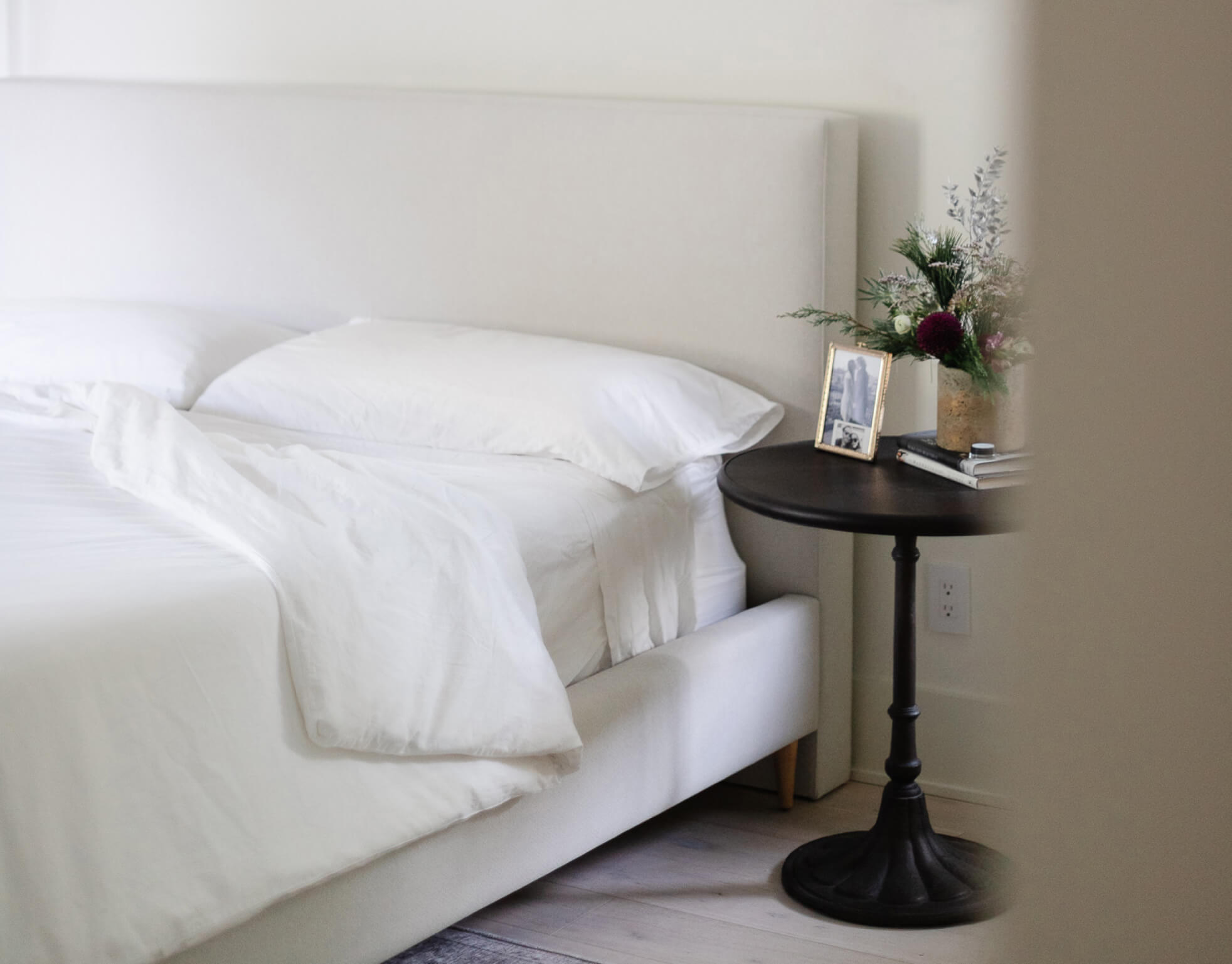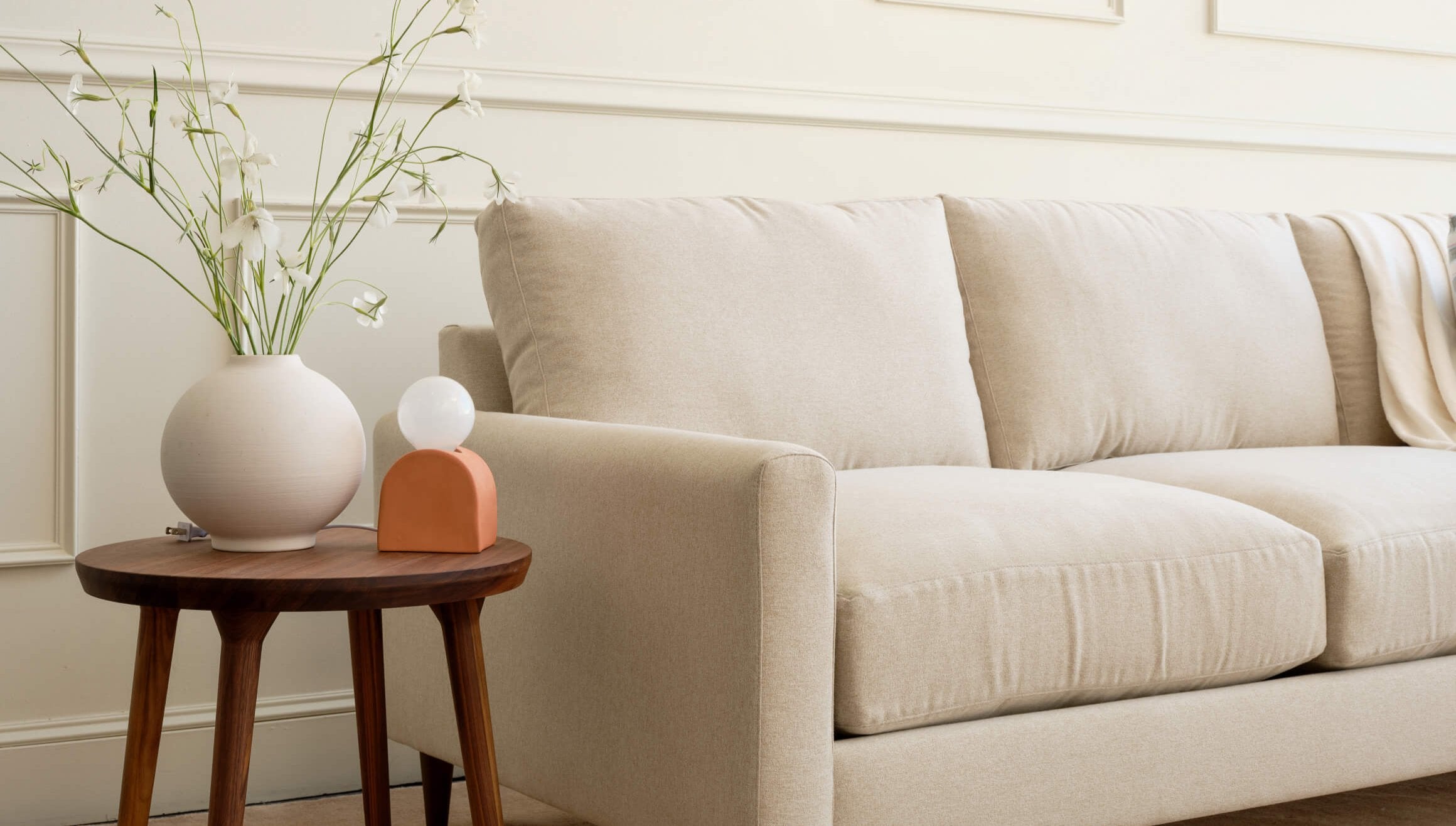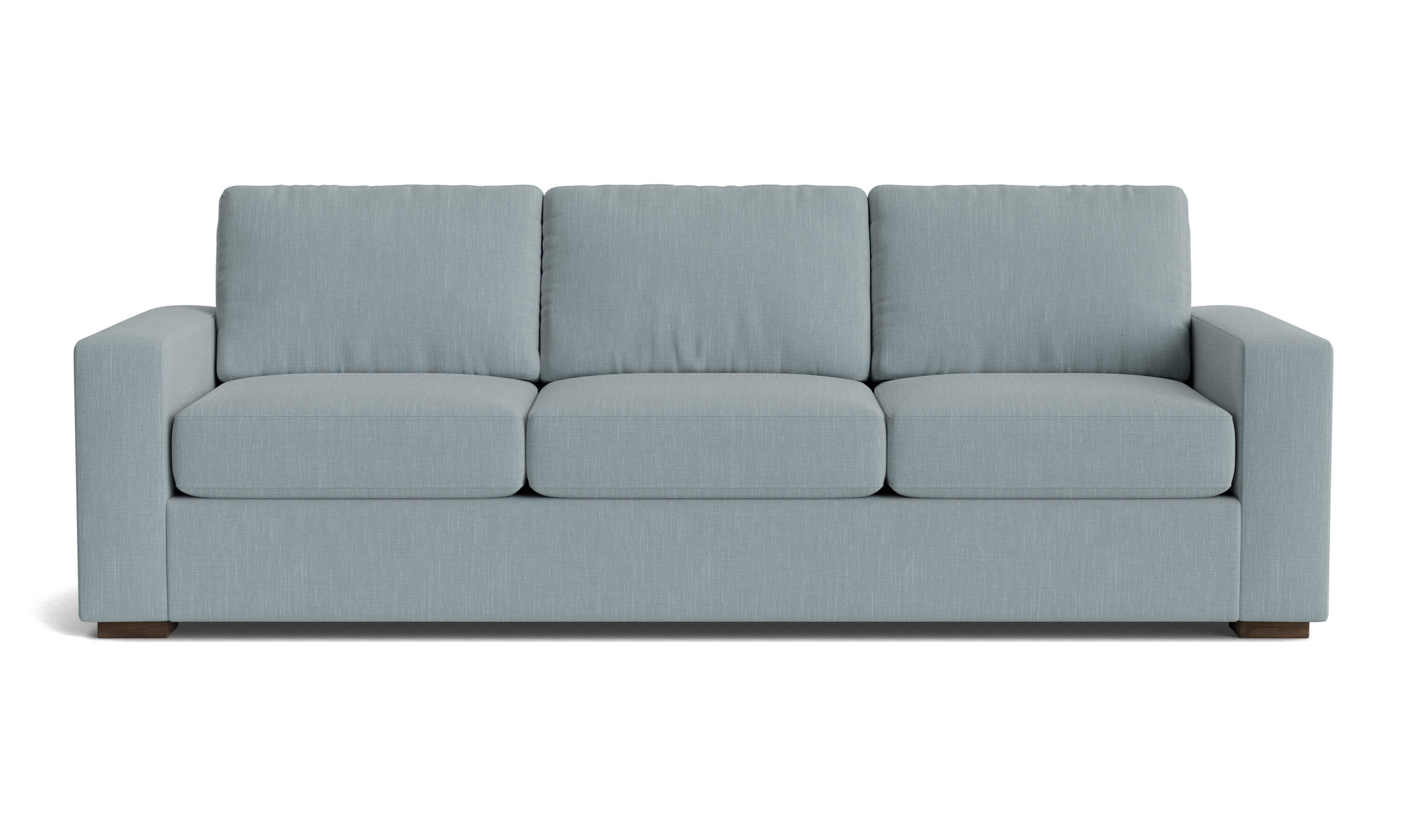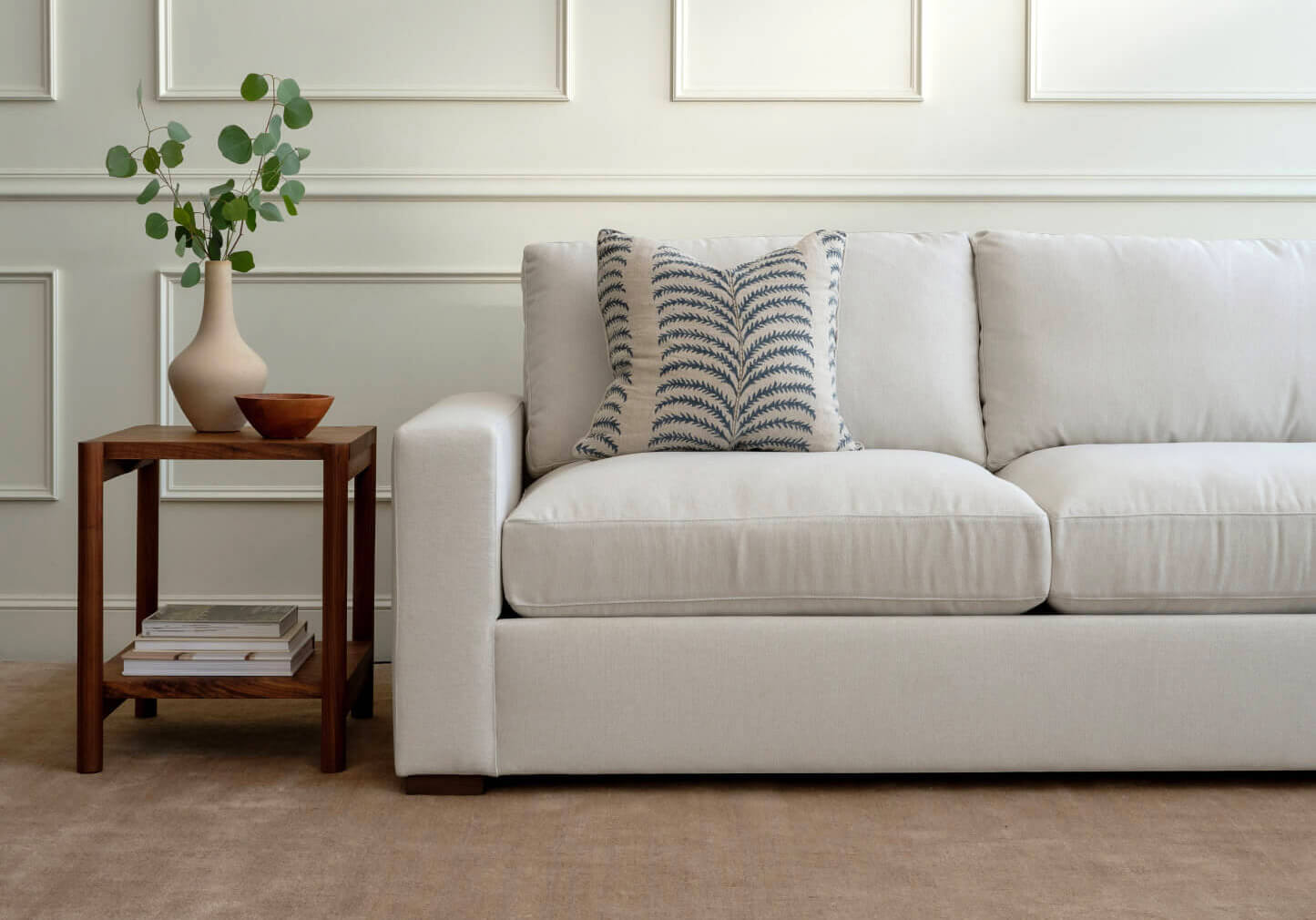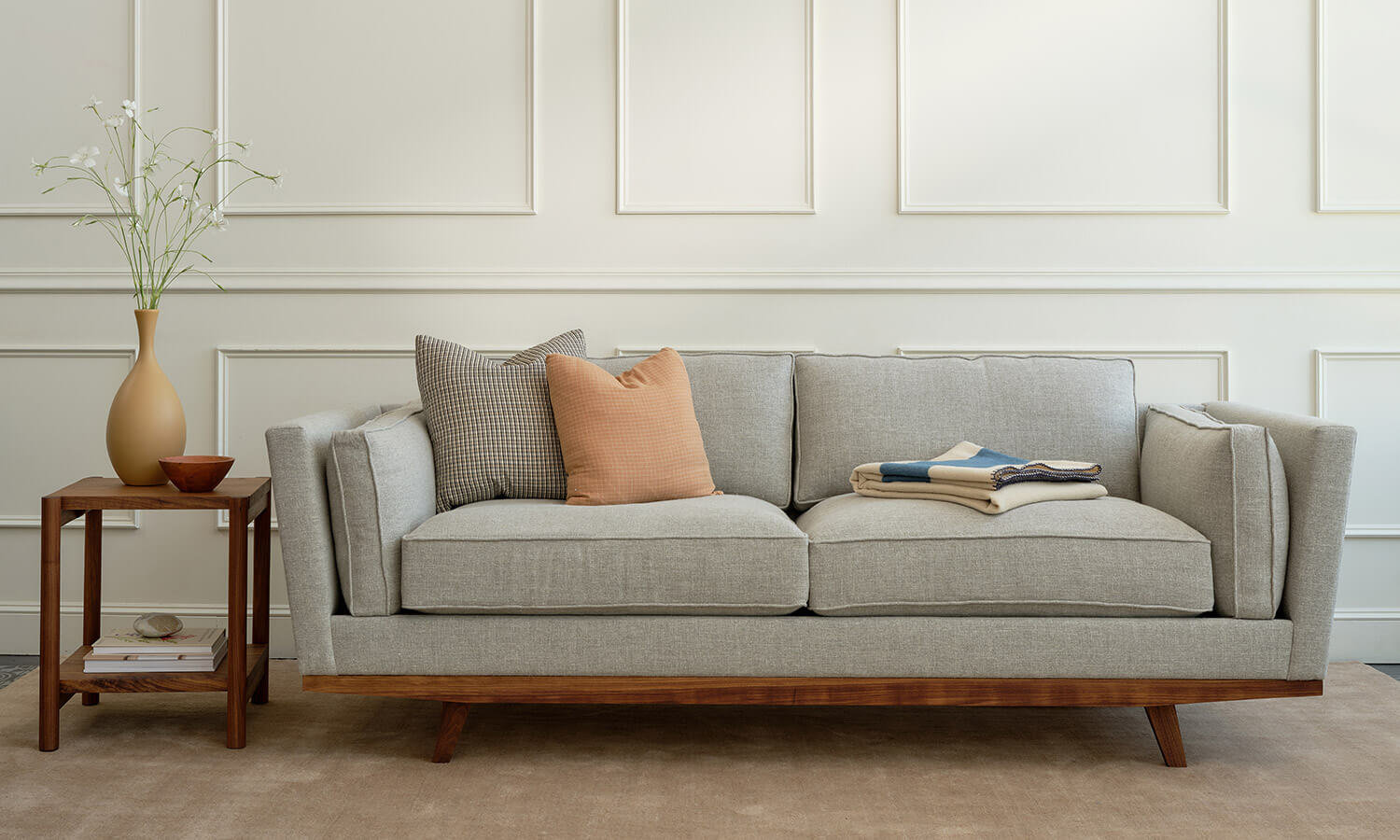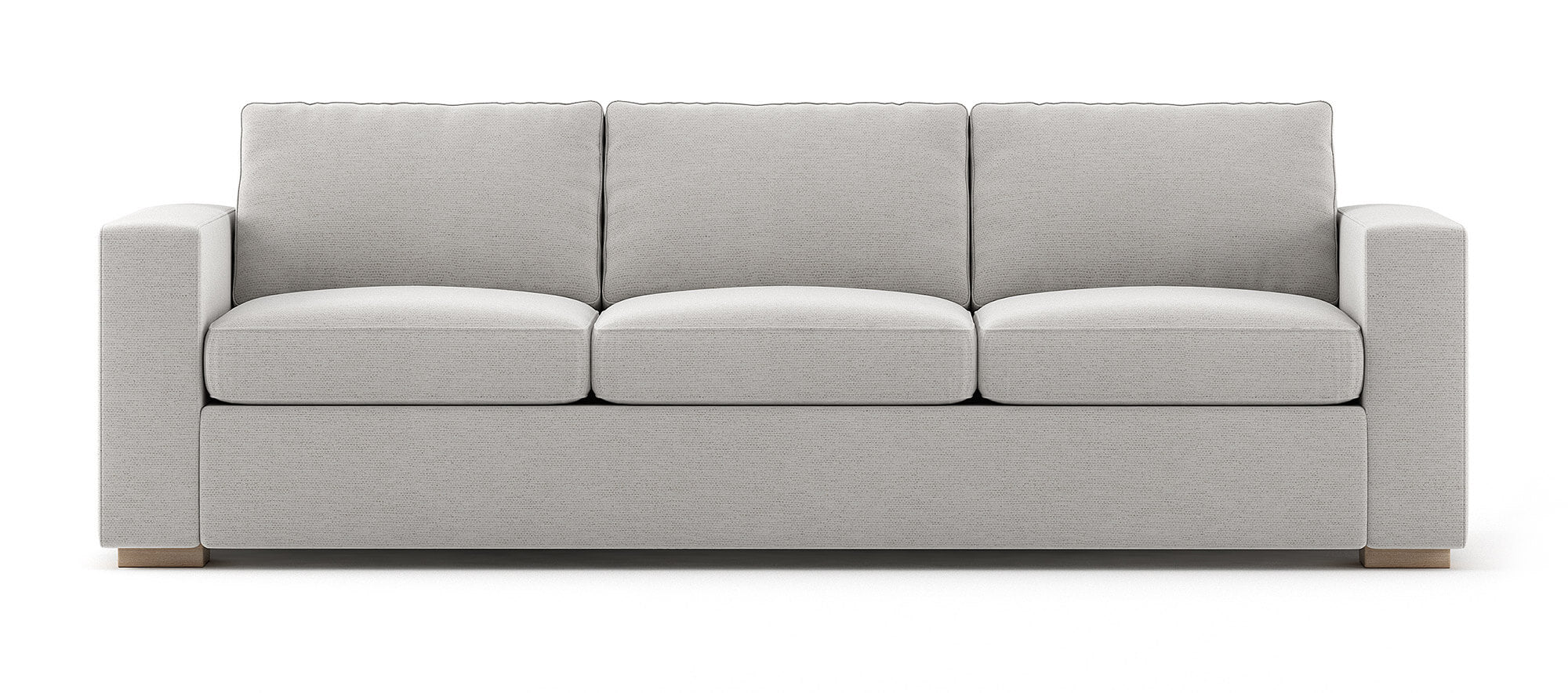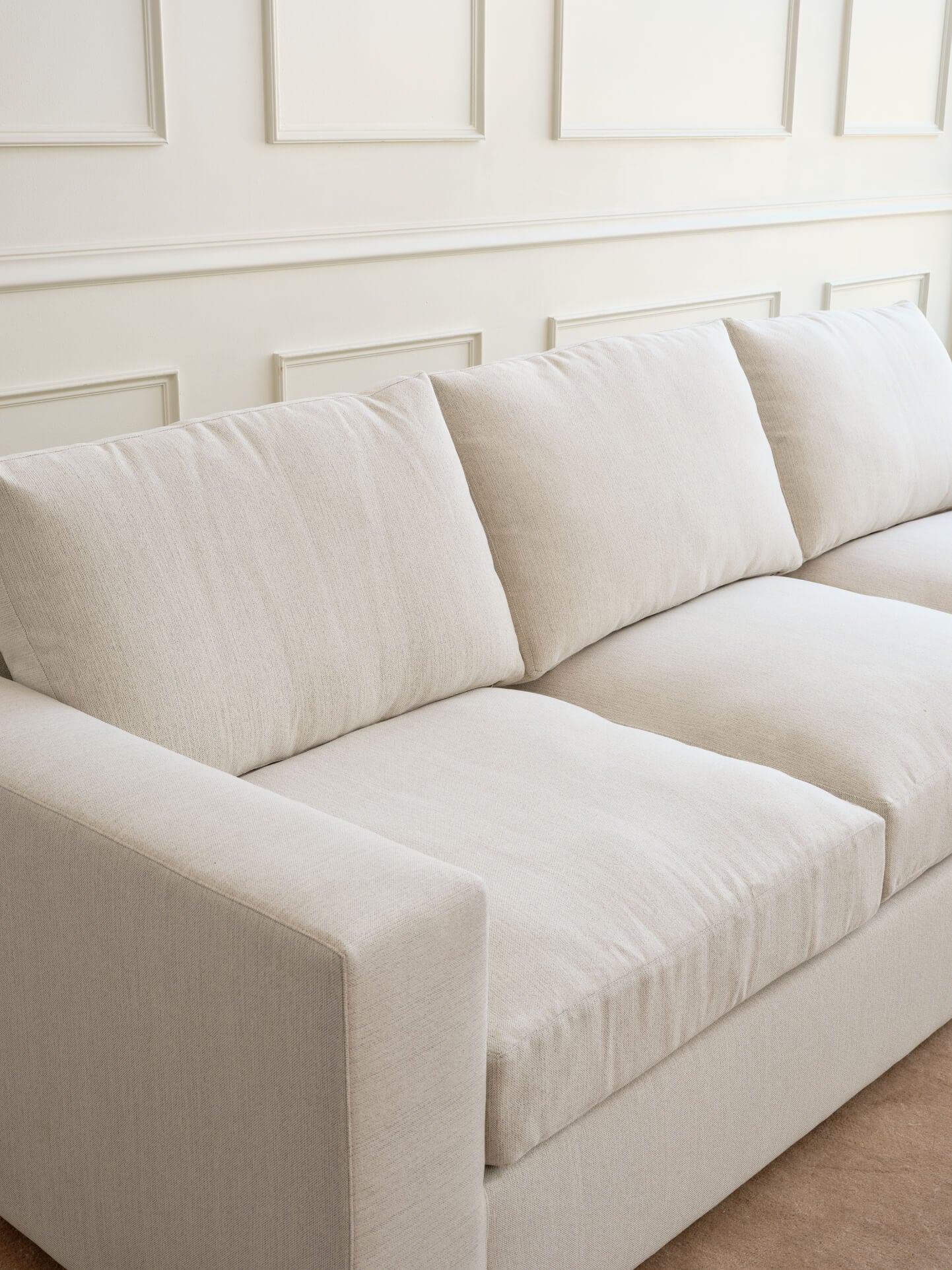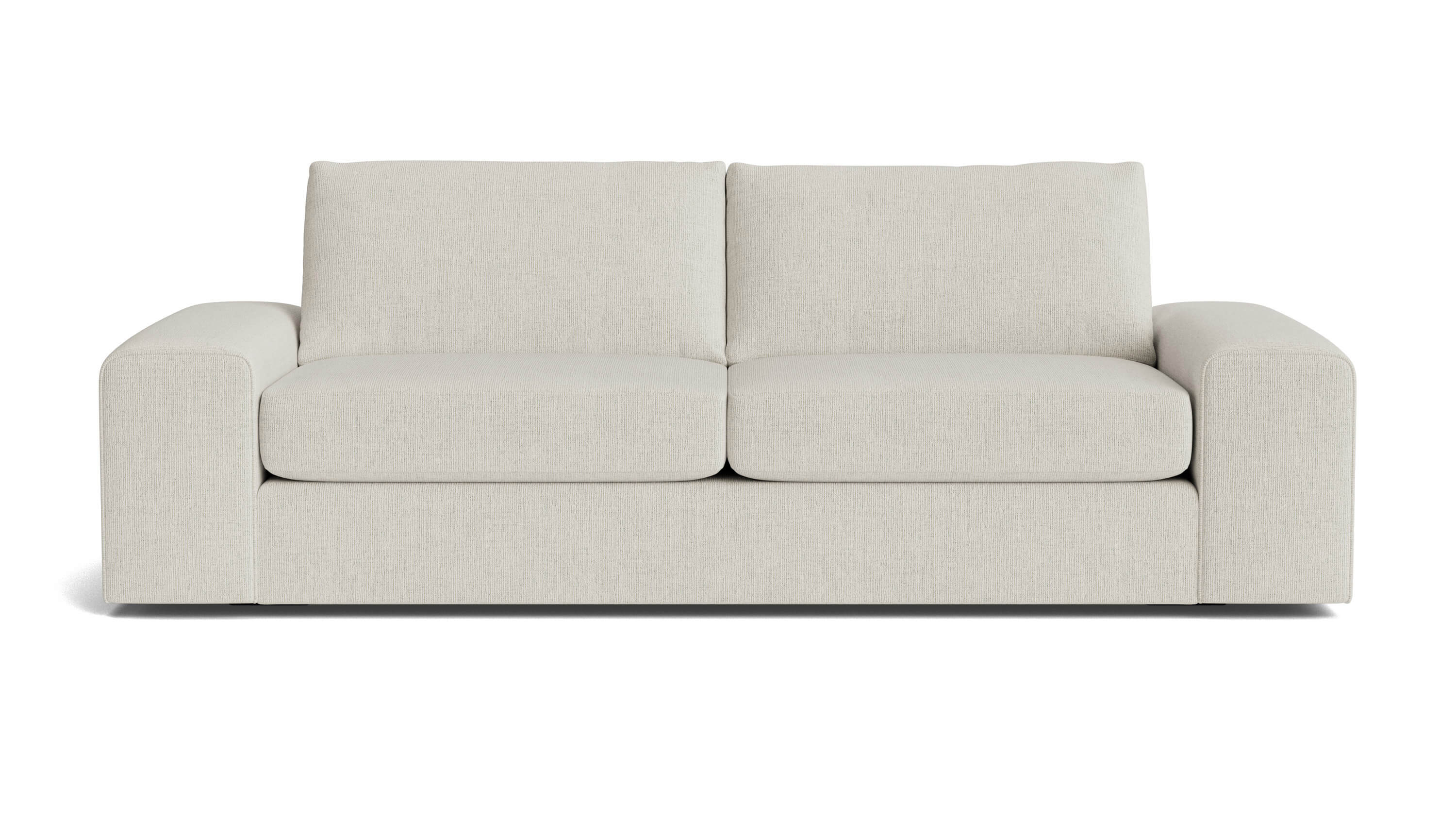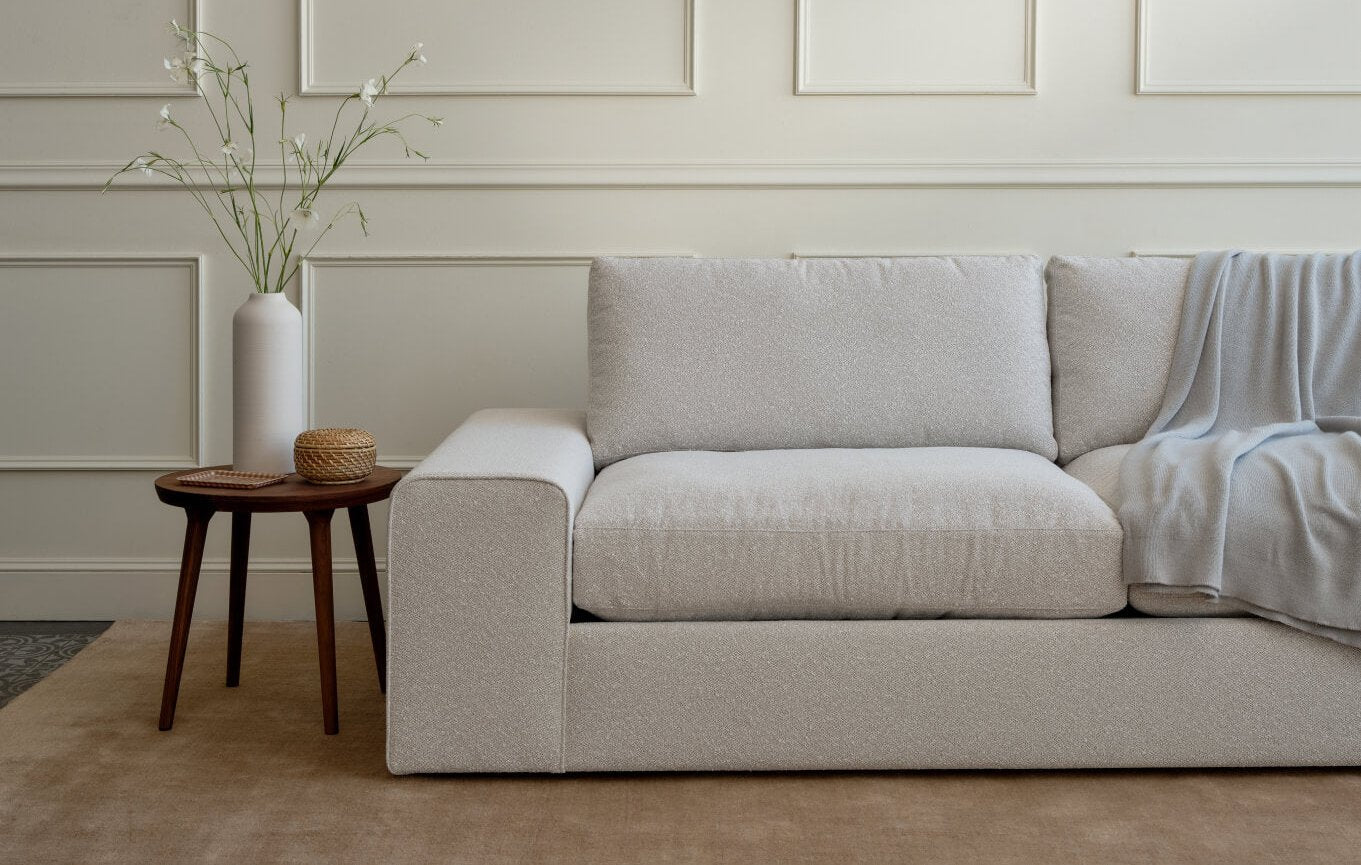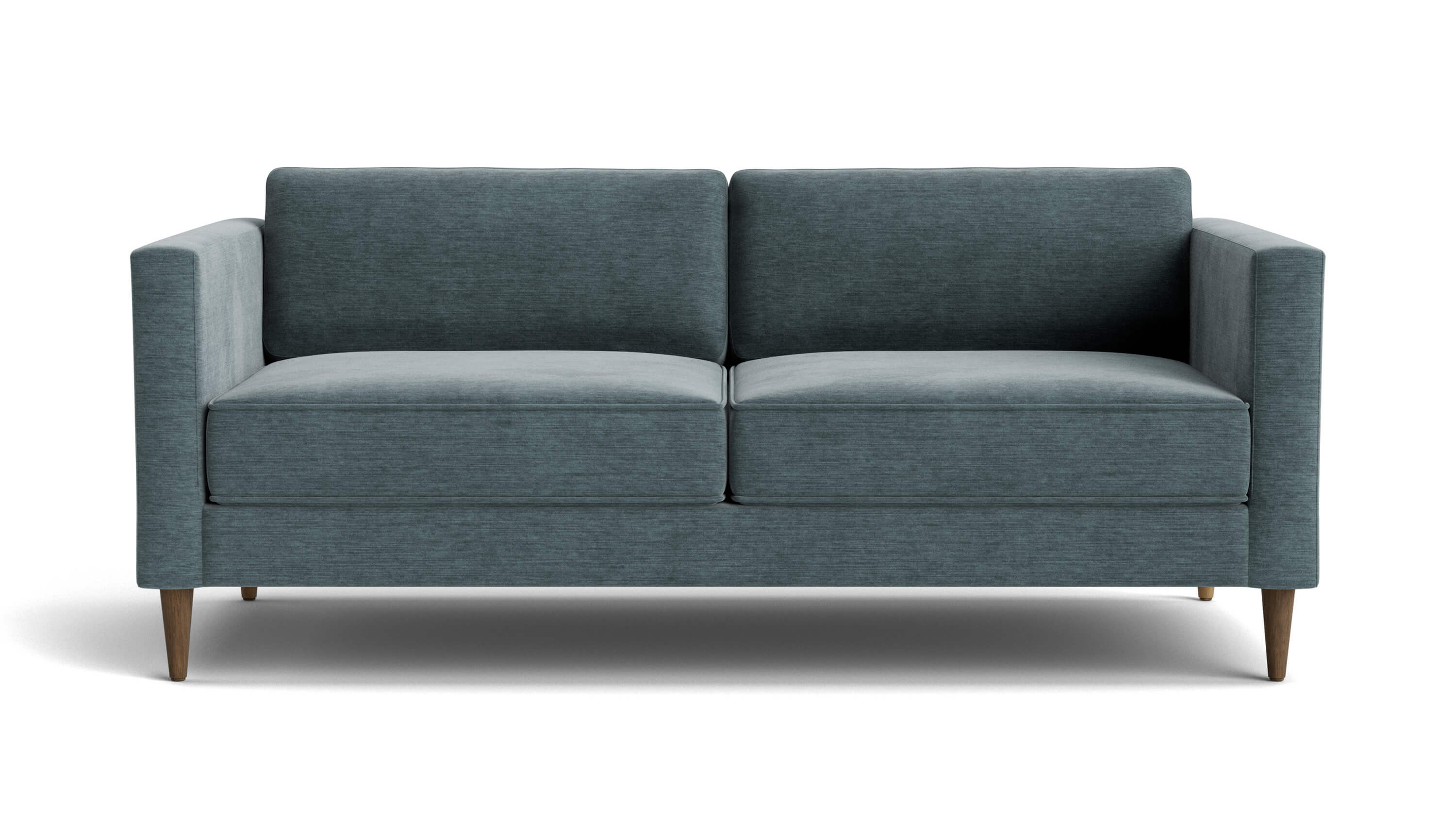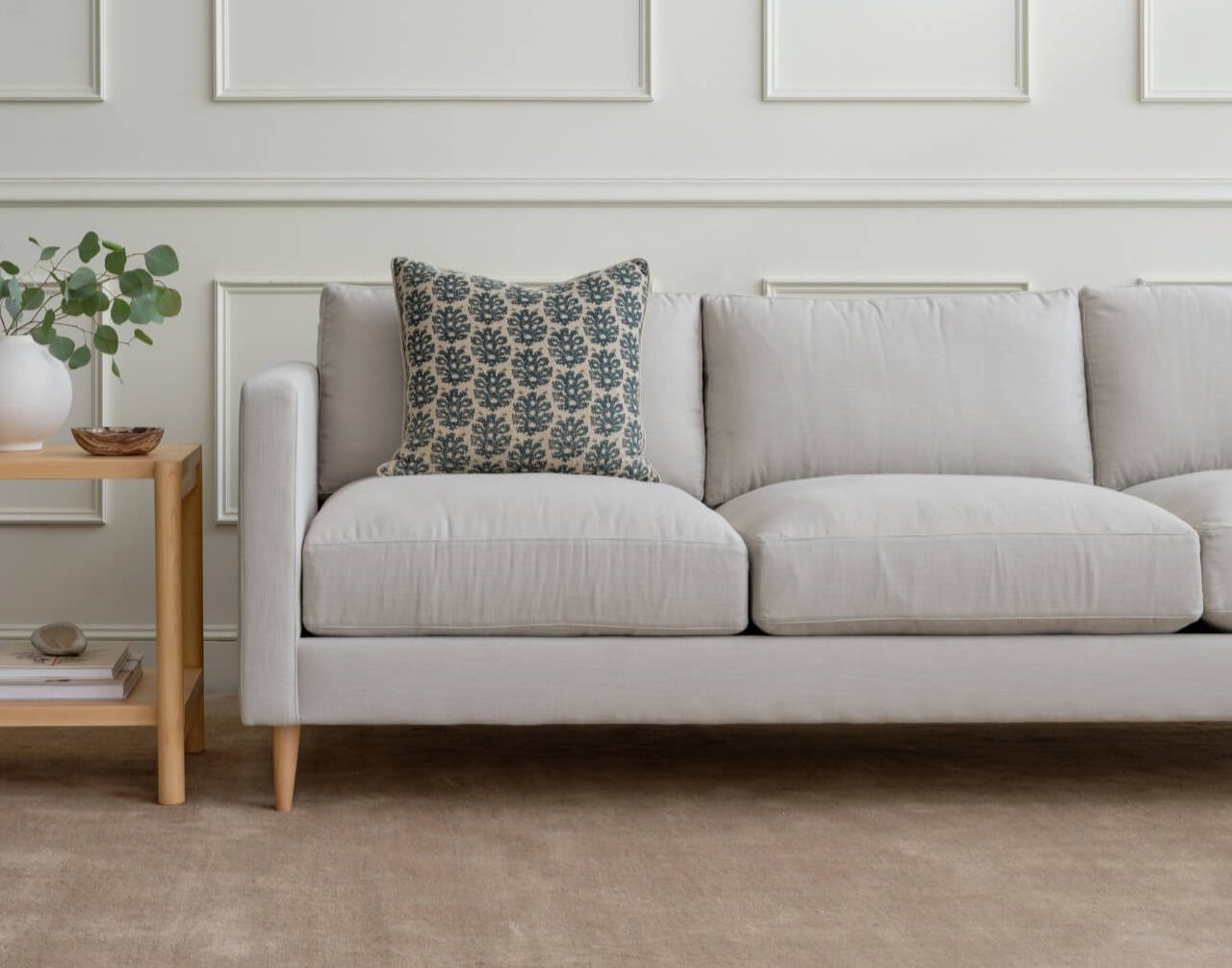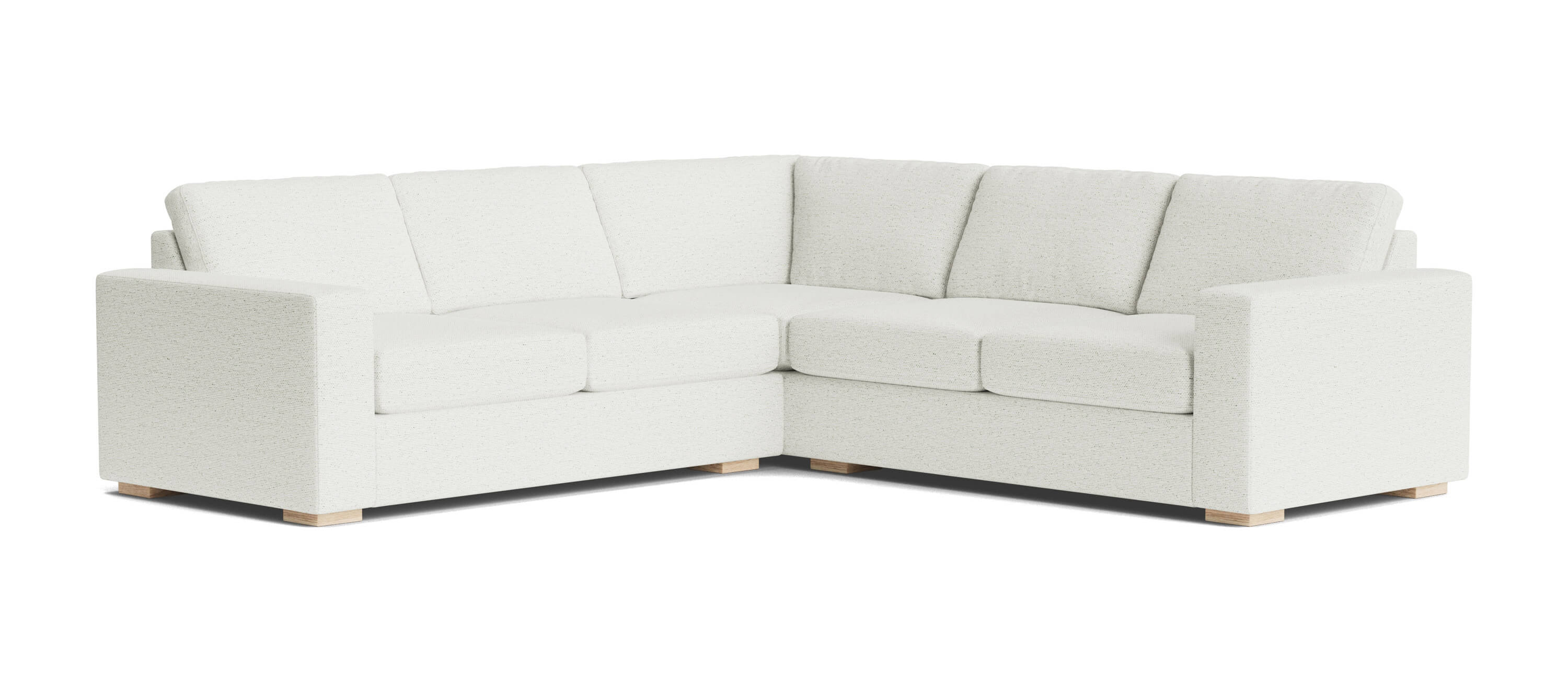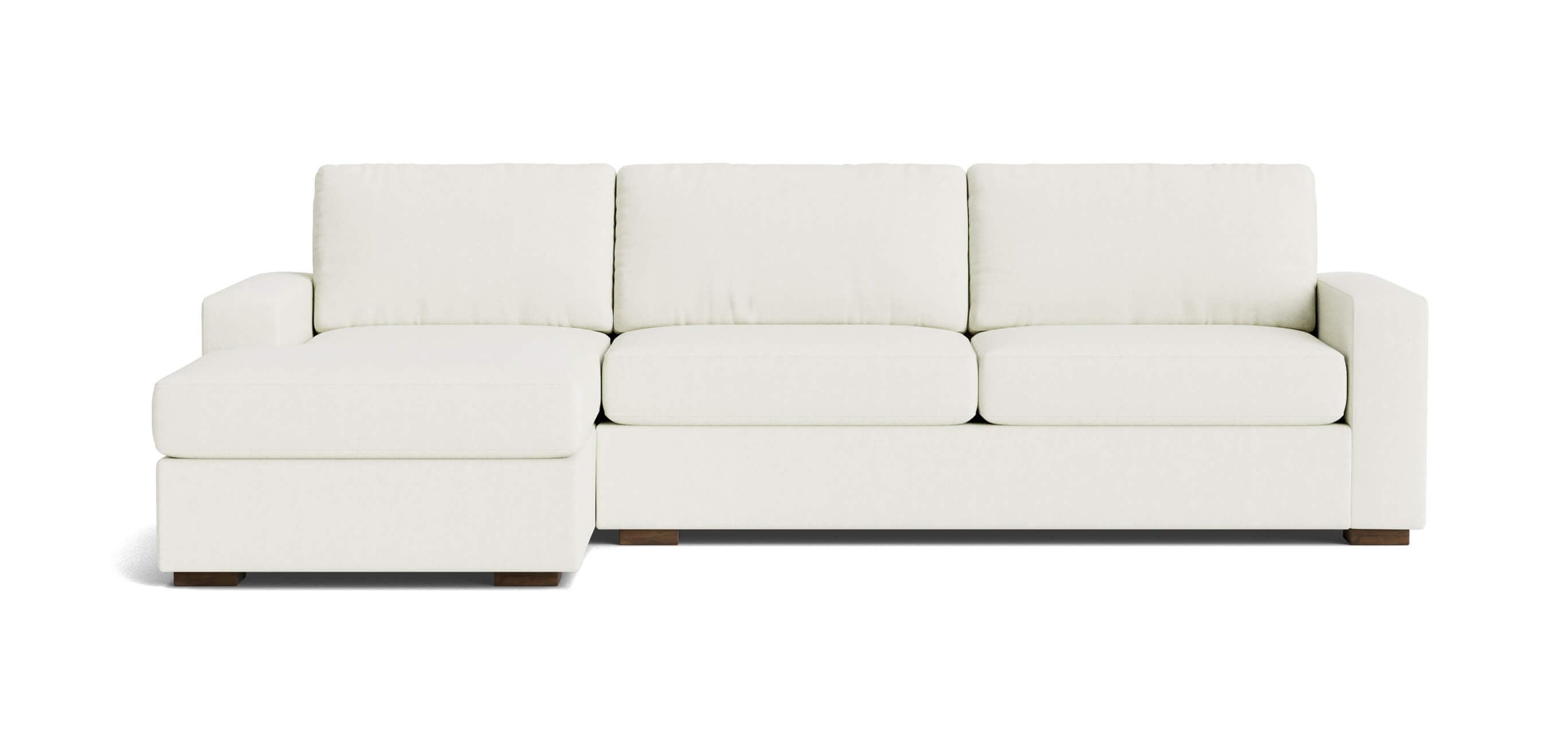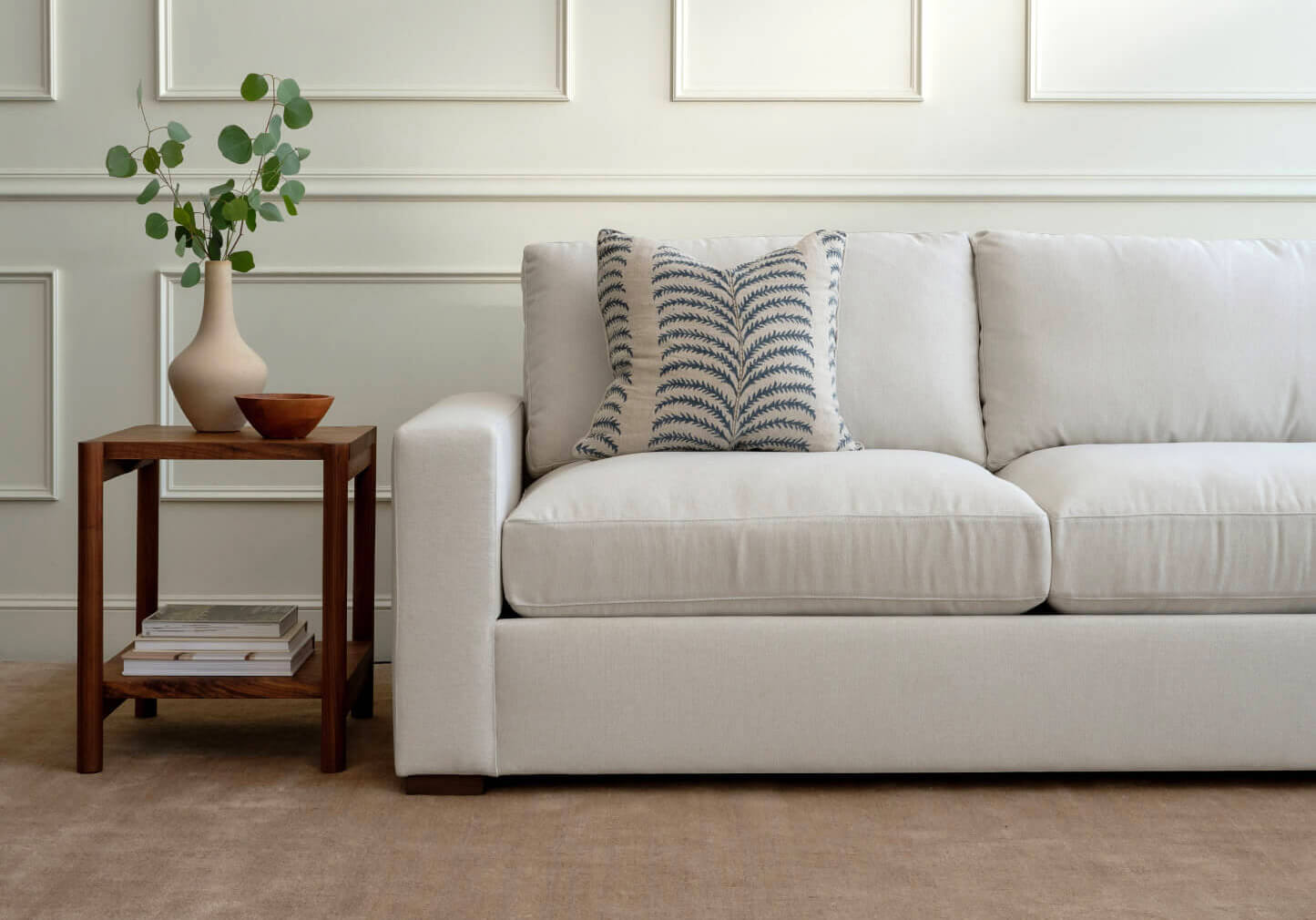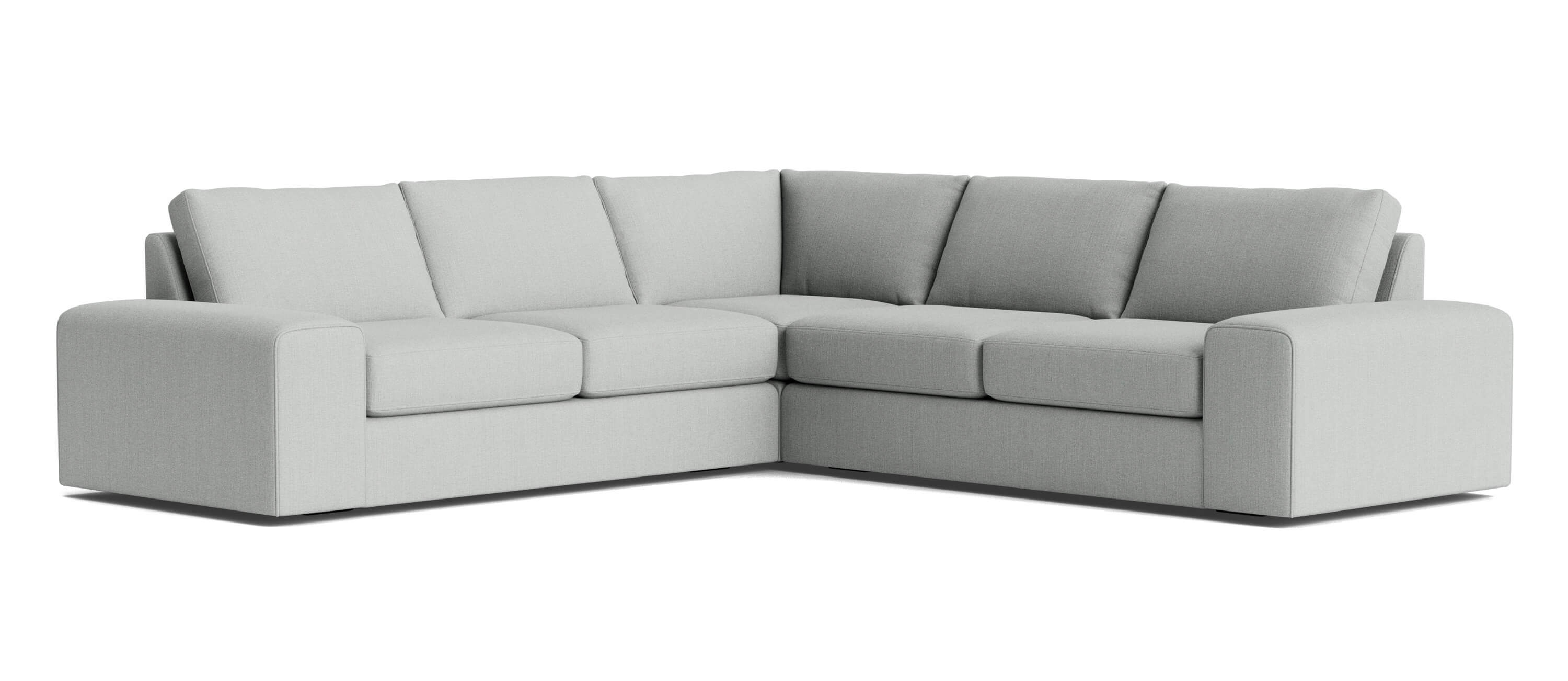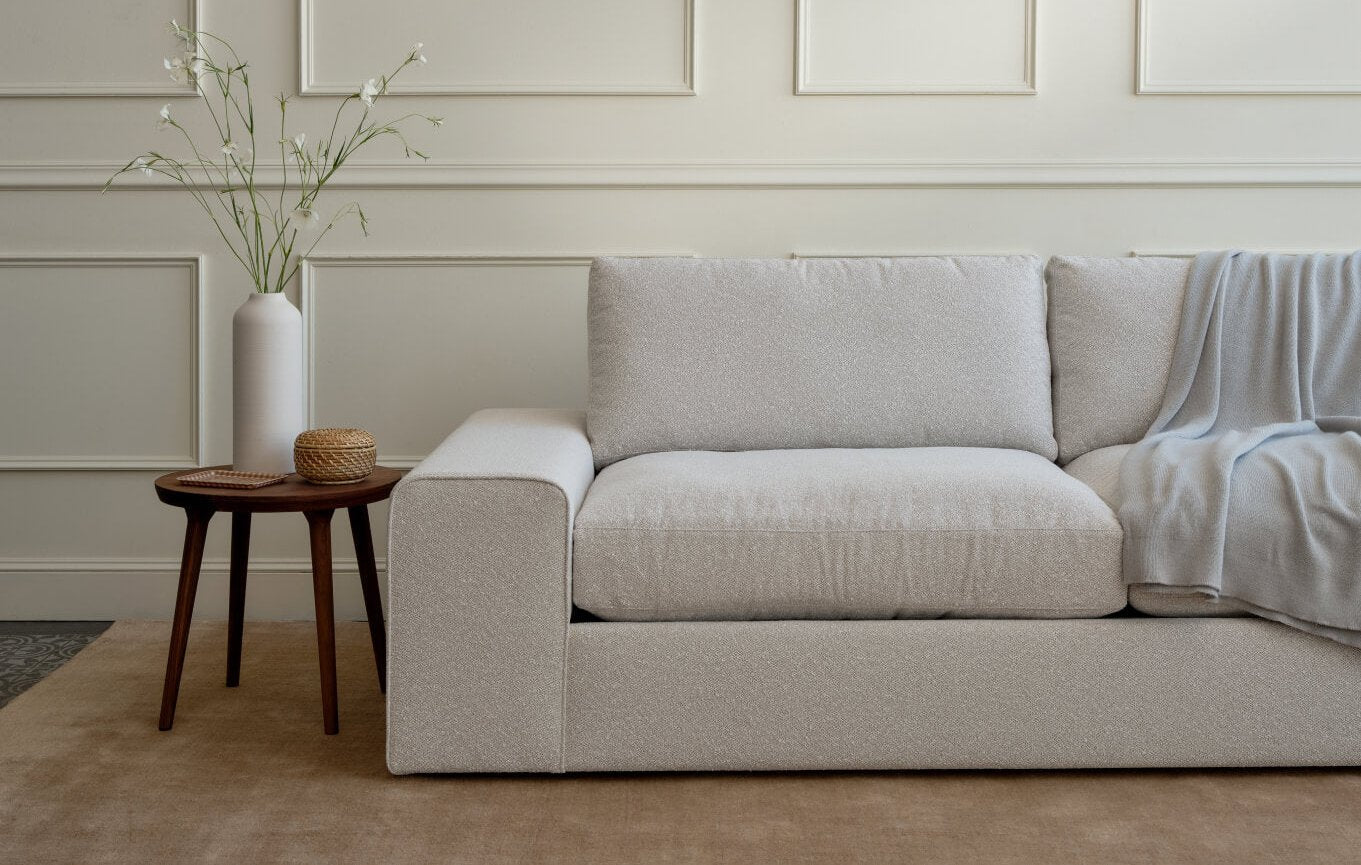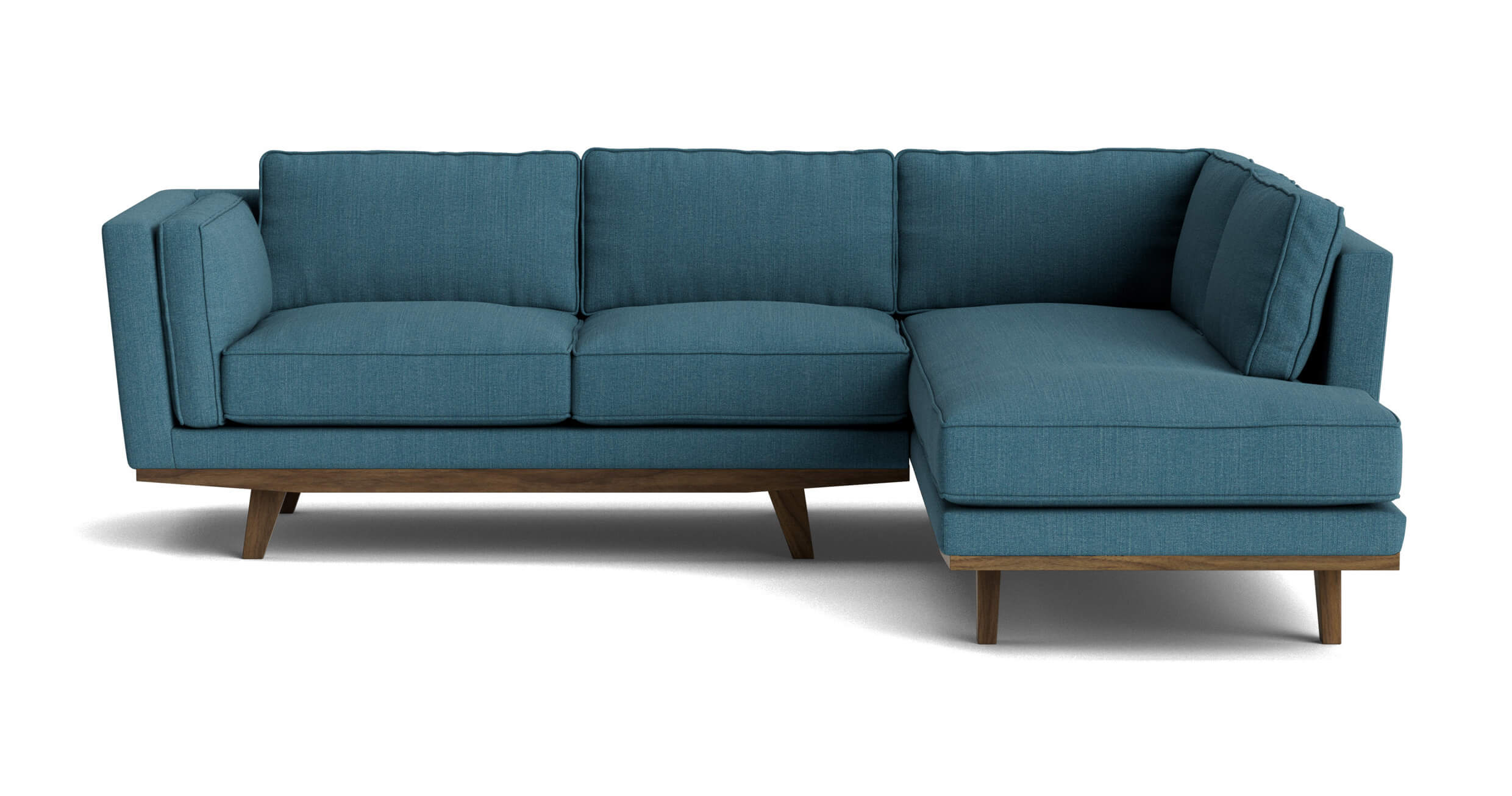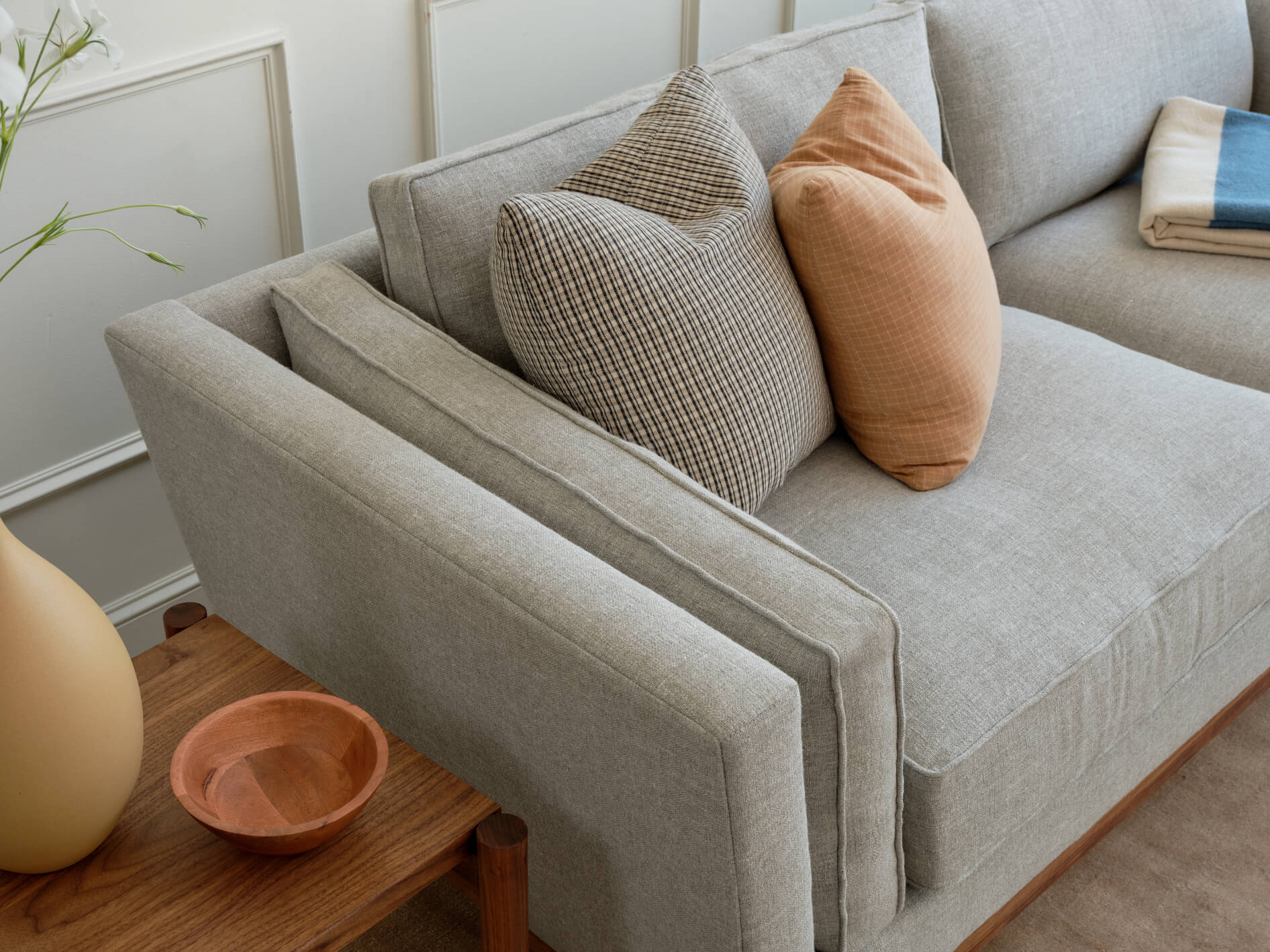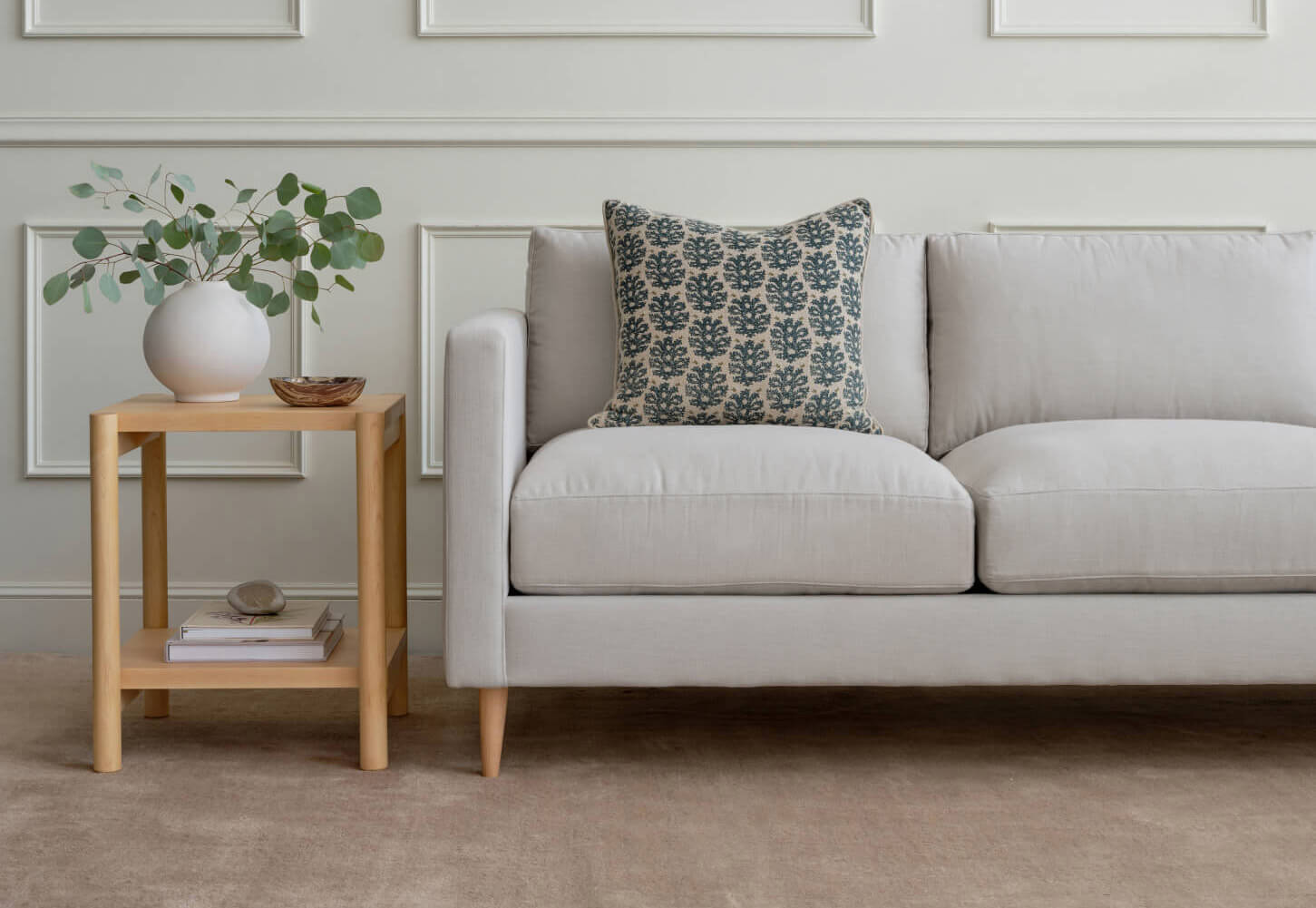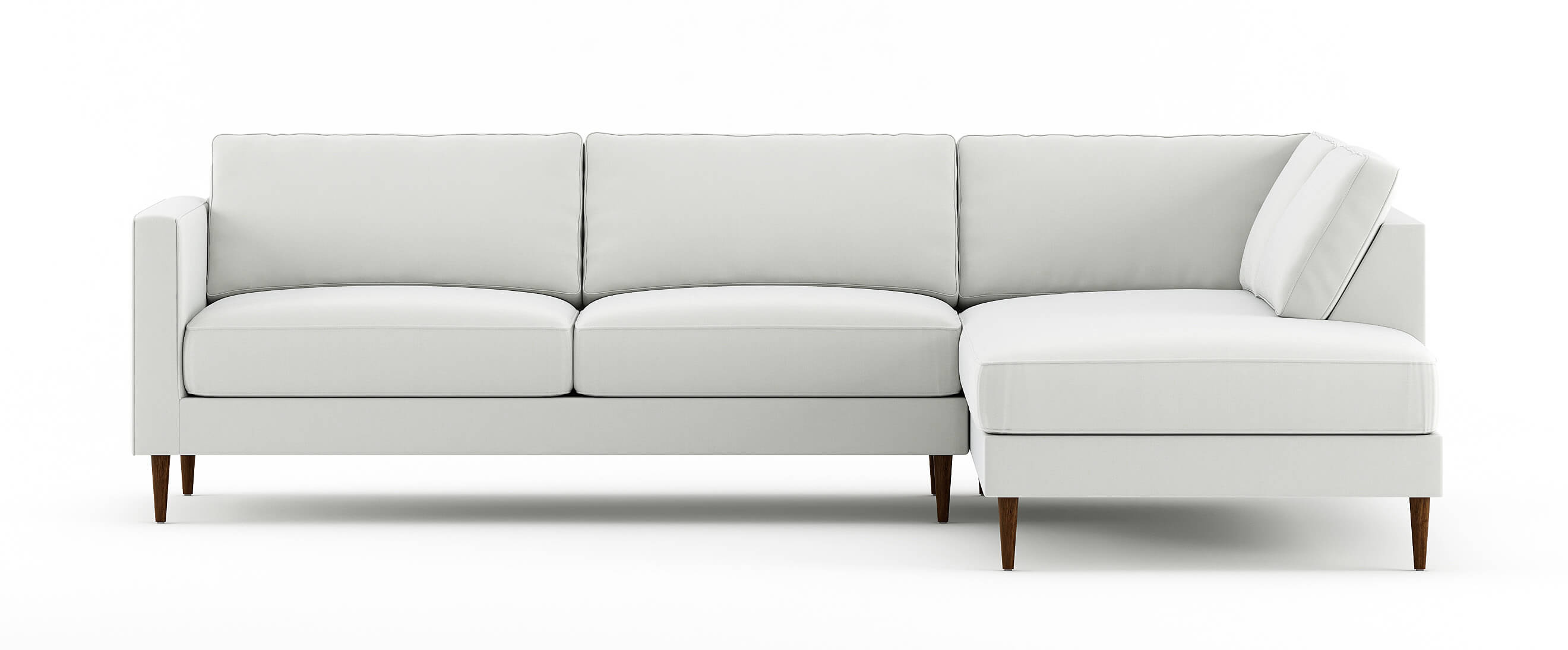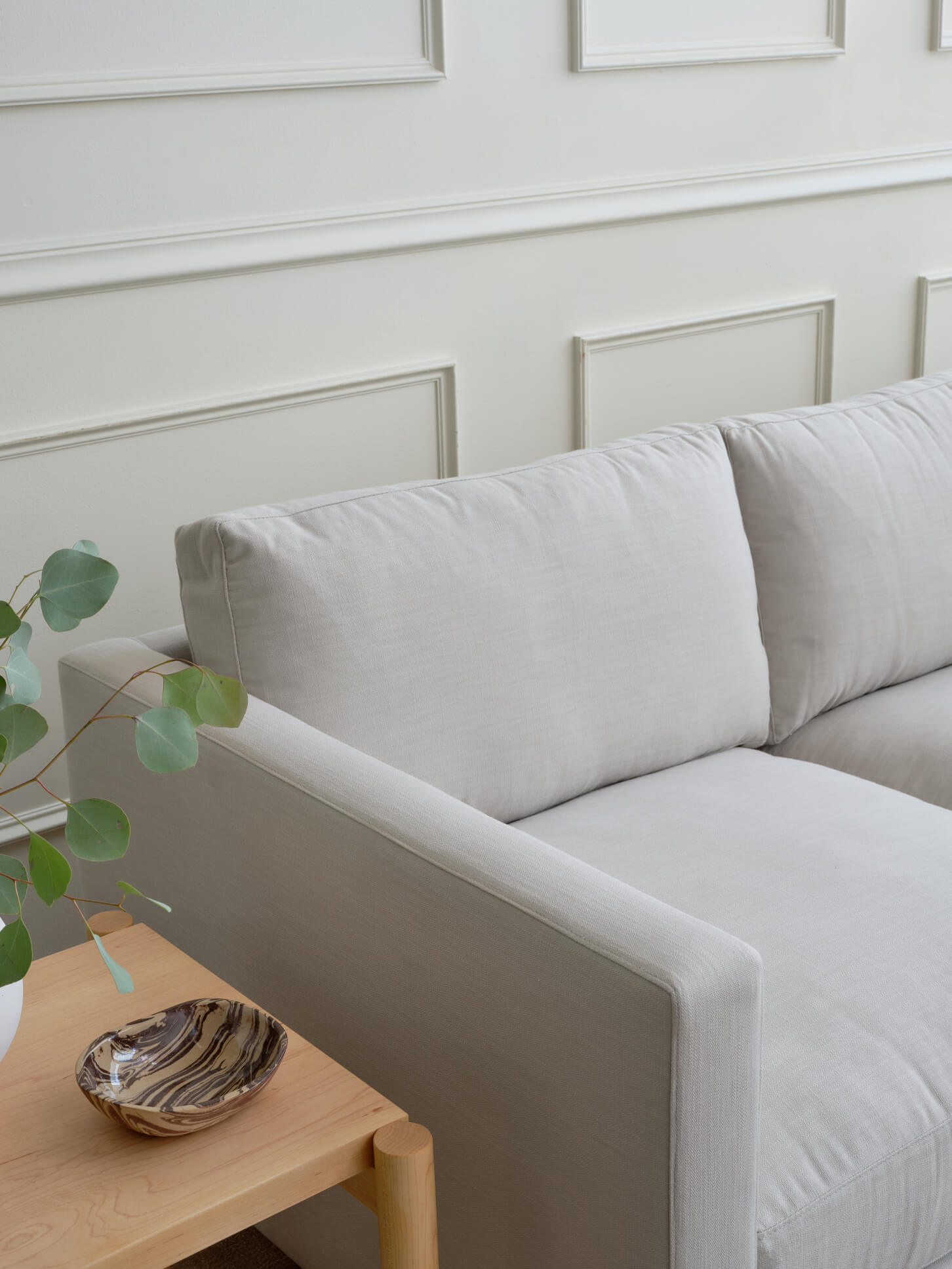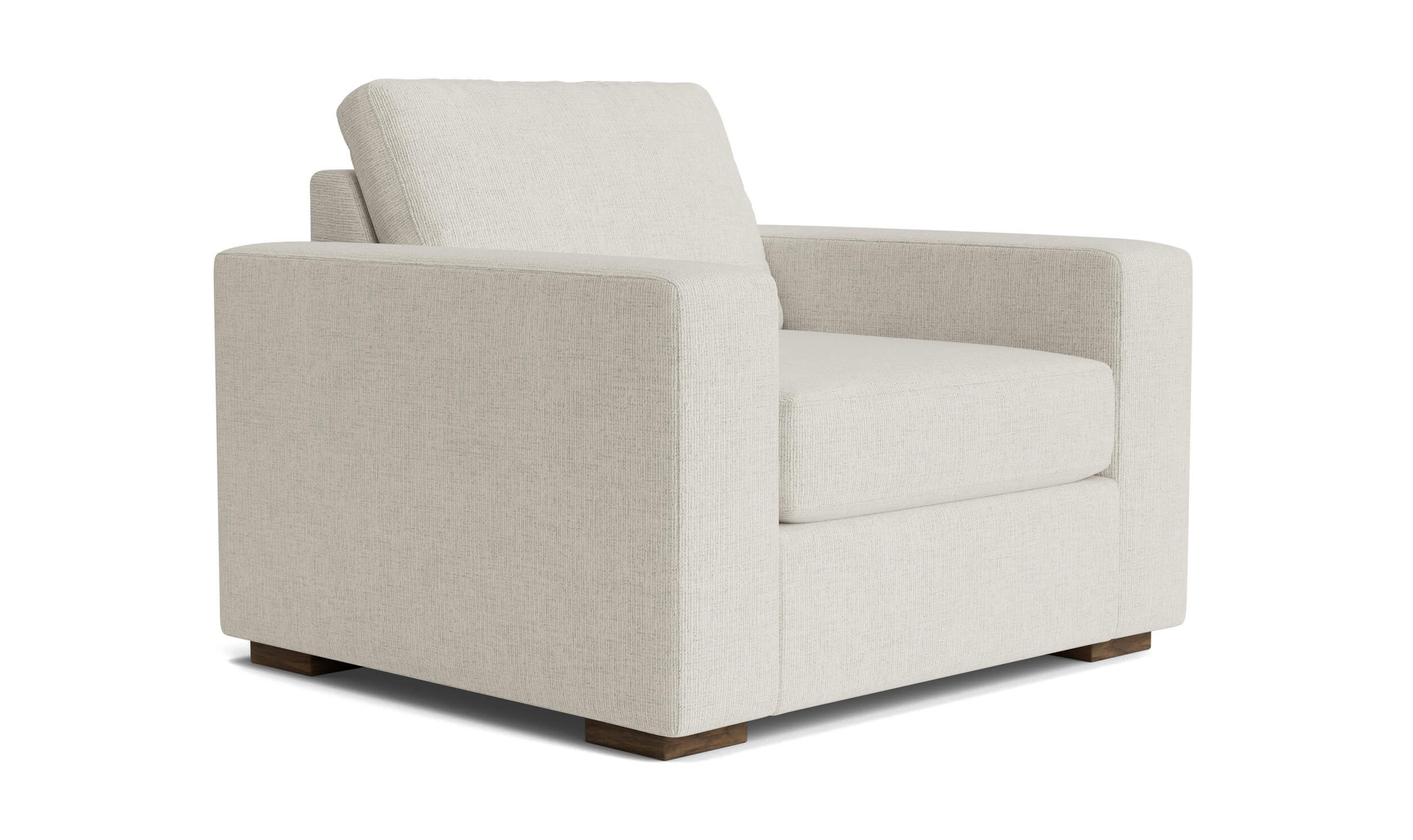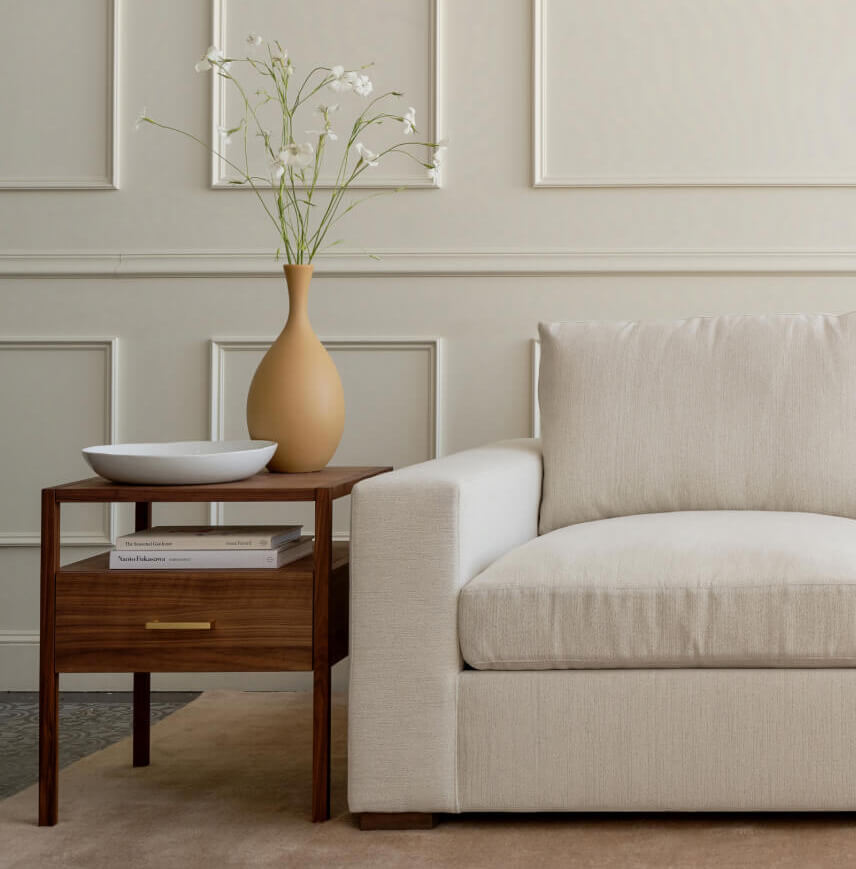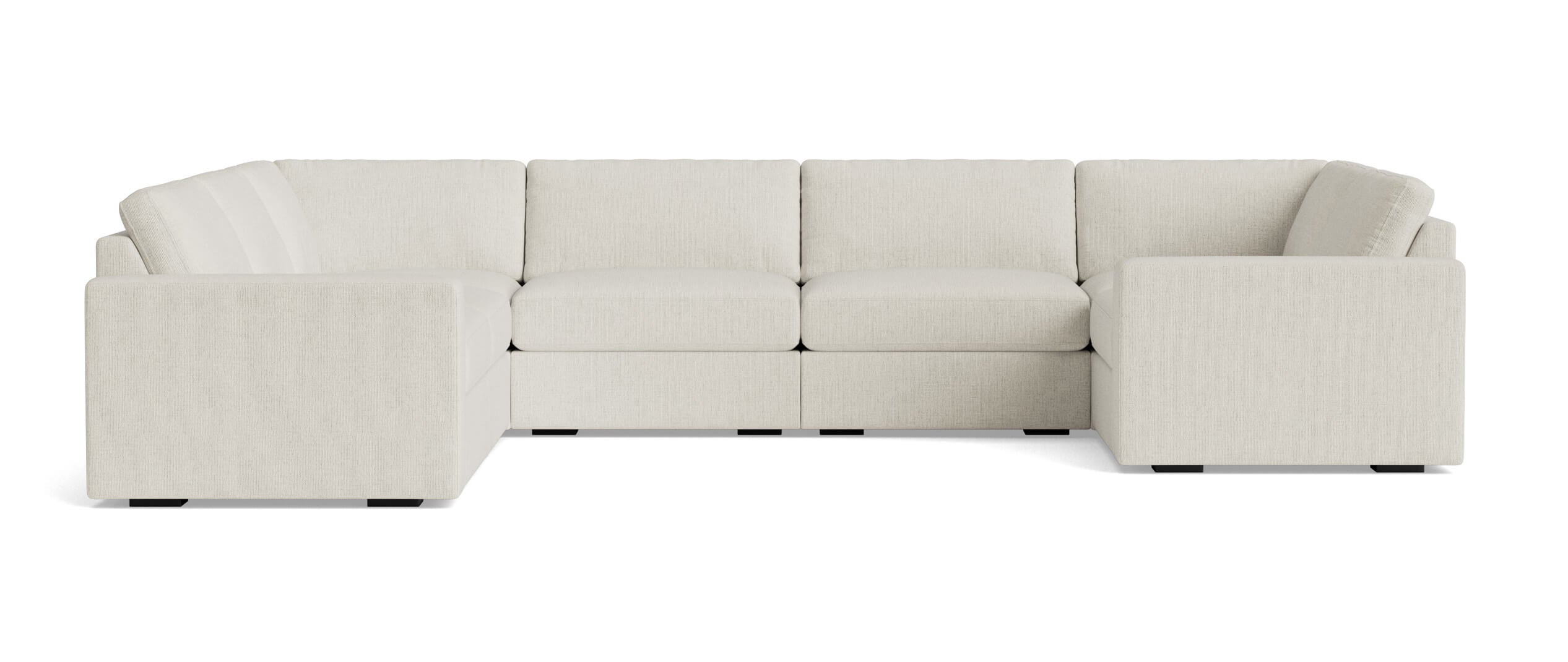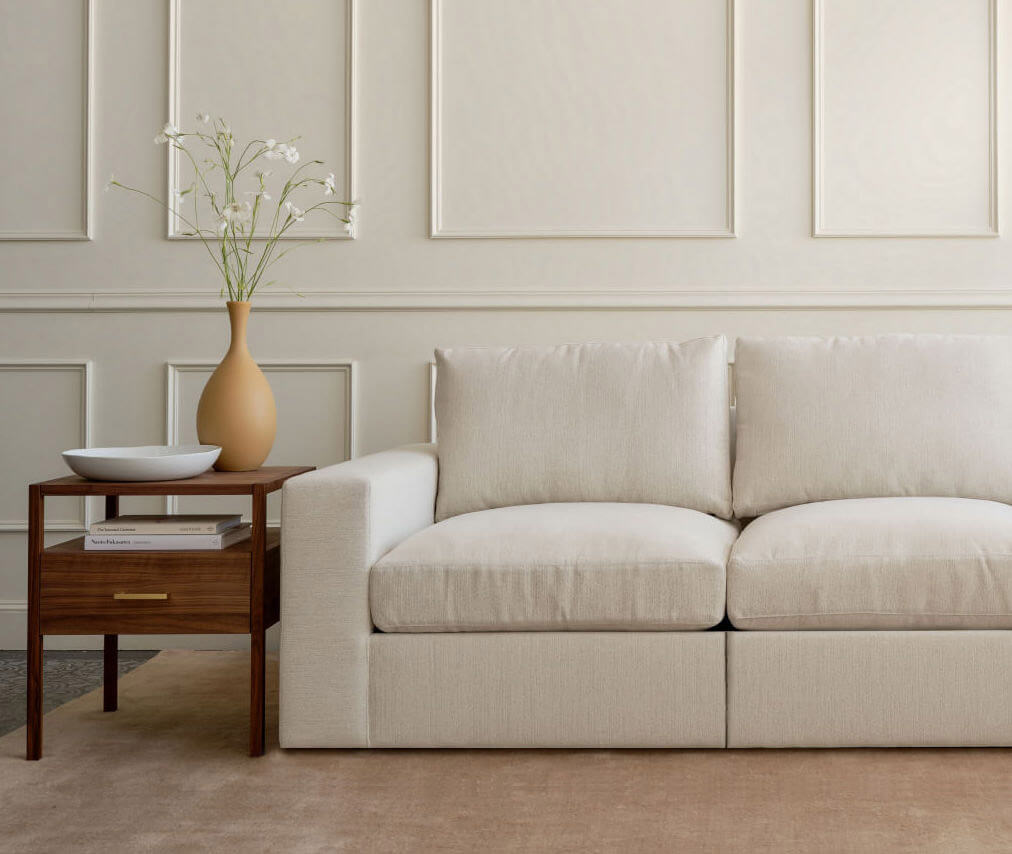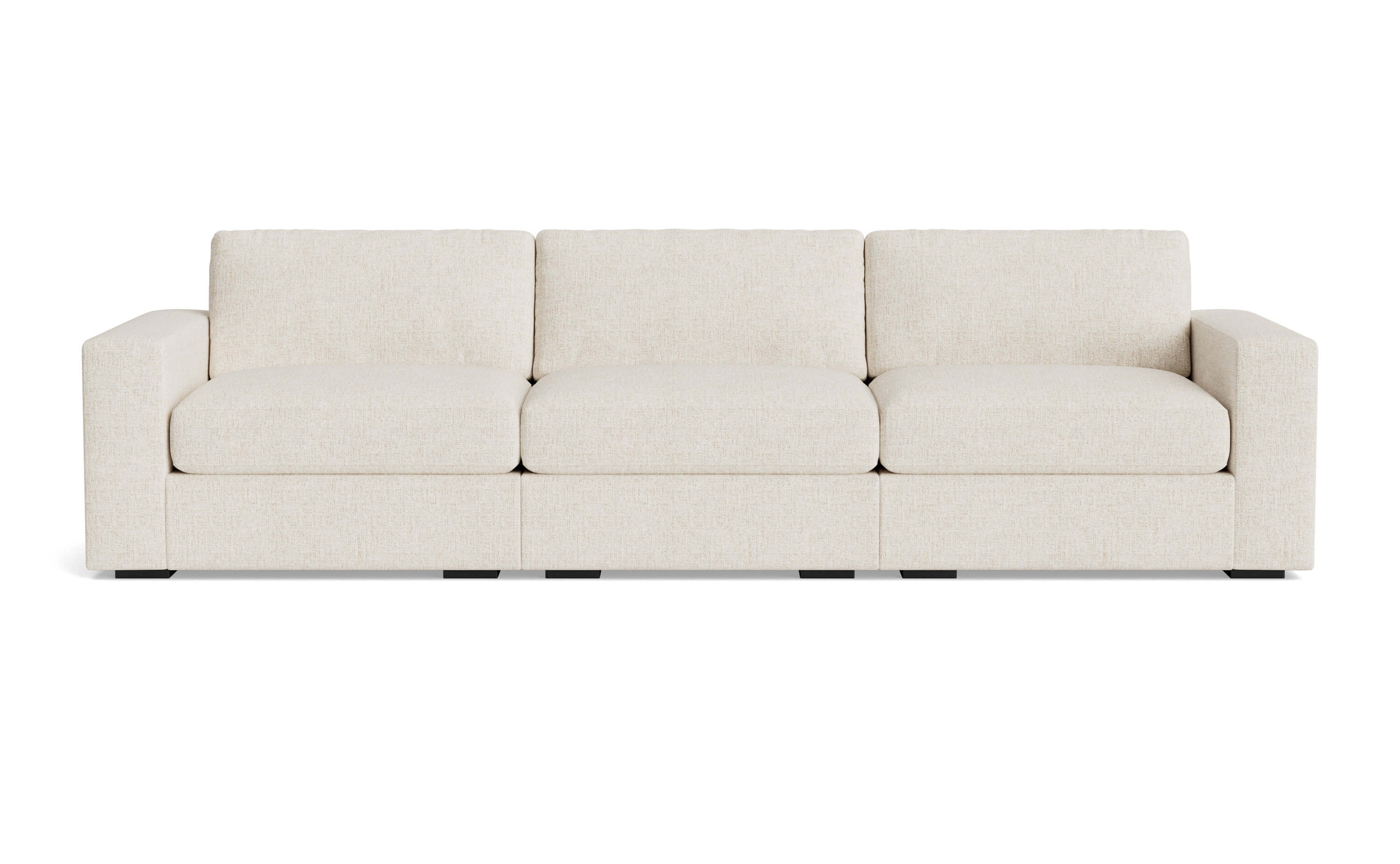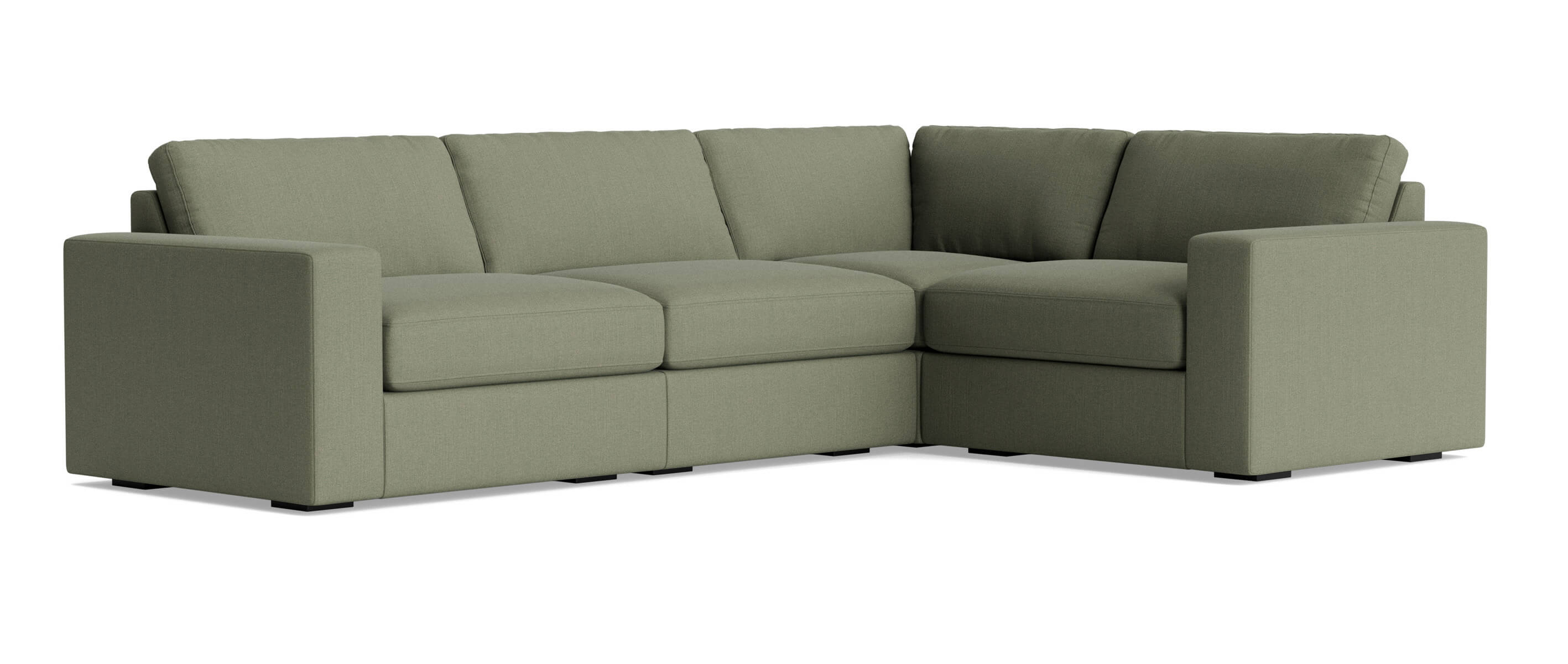
Warm. Fuzzy. Soft. Wool might make you think of sweaters, knits, and all kinds of cozy things you can wrap up in—which might be why some customers are surprised to hear that we use wool inside our furniture, not on the outside. We’ll explain: let’s take a closer look at this all-star natural fiber.
Where does wool come from, and what makes it so great?
Wool is made of a protein called keratin that comes from different animals (sheep, goats, llamas, yaks, rabbits, musk oxen, camels, and bison (!). Naturally breathable, hypoallergenic, temperature-regulating, antibacterial, odor-resistant, fire-resistant, durable, and moisture-wicking, no other material comes close to wool’s overall utility and versatility.
What’s the science behind all these amazing properties? Unlike synthetics or plant-based fibers, wool is an active, “hygroscopic” fiber that reacts to temperature. This is because wool’s uniquely crimped structure naturally traps pockets of air, adding a layer of insulation and allowing it to release or absorb up to a third of its weight in moisture vapor. This is why wool won't cling, feel wet, or lose warmth like other materials.
Oh, and it’s really comfy!

Where we use it
We use wool as a filling component in our upholstered furniture and as a soft, protective barrier around our natural latex mattresses. For our natural latex + wool upholstered furniture, we also wrap dense needled wool sheets around the frame (see image below).

Cushions are enveloped in wool fiber as an added layer of cushy, breathable support, and also fill the inside of our back pillows (see image below). Ultra soft and fluffy, wool strikes a wonderful balance between the cozy, sink-in feeling of down while offering lasting shape like standard poly fiber.

How it’s processed
Sheep are usually shorn once per year in the spring, producing a “fleece” of wool that is then cleaned to remove any dirt, twigs, leaves, and excessive lanolin. From there it’s sorted, combed, and separated, and spun if it’ll be turned into yarn.
Where we source it
We care deeply about the wellbeing of animals and only work with those who do, too. Our cruelty-free, OEKO-TEX® Standard 100-certified wool is gently shorn from sheep in New Zealand (footage of them above!), where they have room to roam under the care of farmers who genuinely care for the environment, encourage healthy ecosystems, and follow the World Organization for Animal Health’s “five freedoms” for animal welfare:
- Freedom from hunger and thirst
- Freedom from discomfort
- Freedom from pain, injury or disease
- Freedom to express normal behavior
- Freedom from fear and distress
Note: We do not accept mulesing and can guarantee that our wool supplier in New Zealand is mulesing-free—in fact, mulesing is banned in New Zealand.
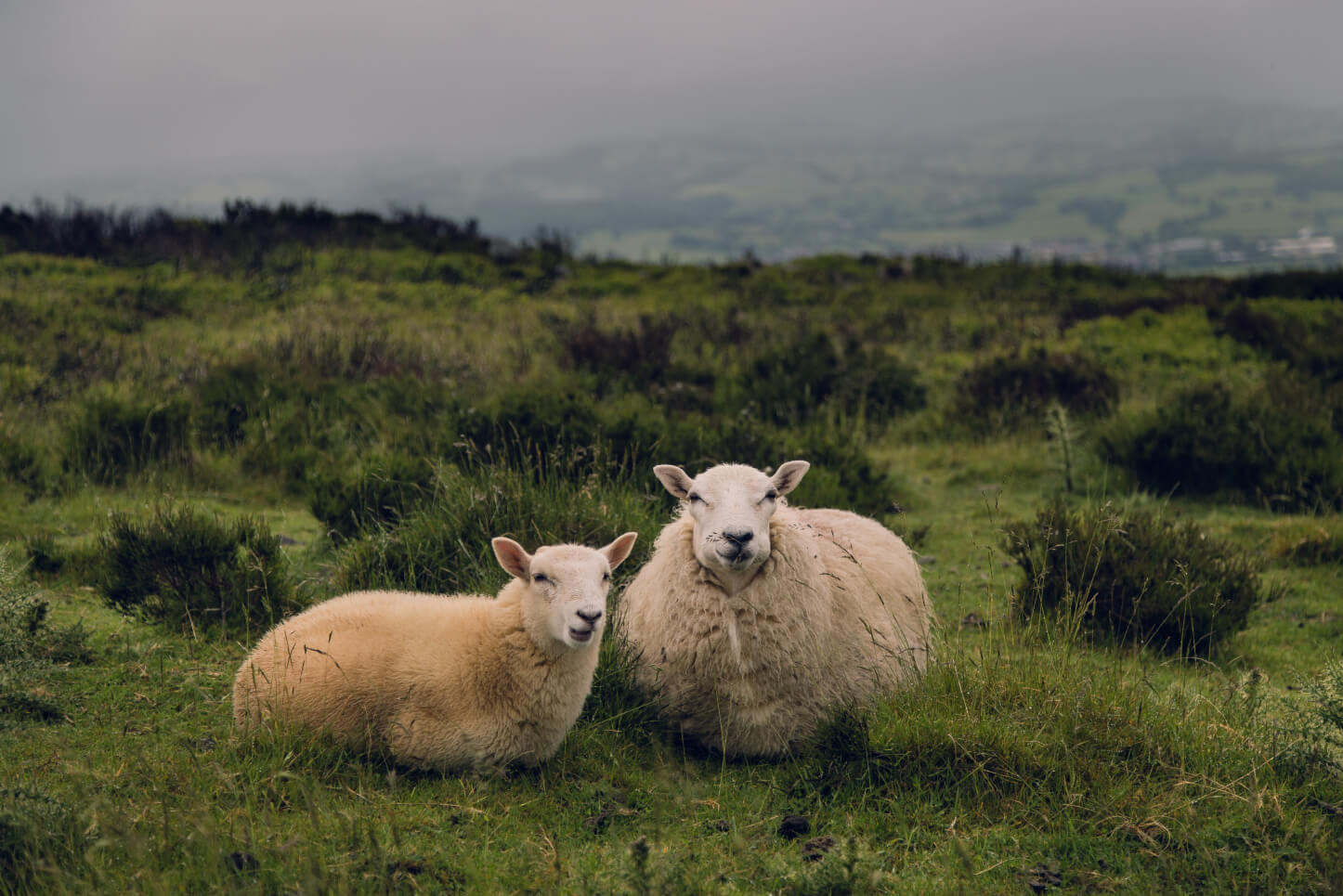 Why it’s a better environmental choice
Why it’s a better environmental choice
As an ethically-farmed, natural material, wool follows a more sustainable model of production that minimizes harm to the environment. Because wool fleeces regrow after shearing, wool is a natural, renewable fiber source. It also breaks down relatively fast, returning nutrients to the soil—and without releasing microplastics along the way, like synthetic equivalents might.
Our wool is also certified by OEKO-TEX® Standard 100, a globally recognized mark of quality for textile products that imposes strict limit values for harmful substances. OEKO-TEX® Standard 100 wool is free from plastics, APEO, NPEO, pesticides, carcinogenic colorants and heavy metals.

To the best of our knowledge, Medley is among only a few companies using wool as a frame and filling component—and after years of testing and researching materials, we've found that it's just the right element for added comfort, lasting shape, and supreme durability.
Wool is just one part of what makes our furniture look and feel great: we consider each layer from the inside out—the frame to the upholstery fabric—with help from third-party certification partners who help us source more ethical, environmentally-friendly materials: get to know them here.





